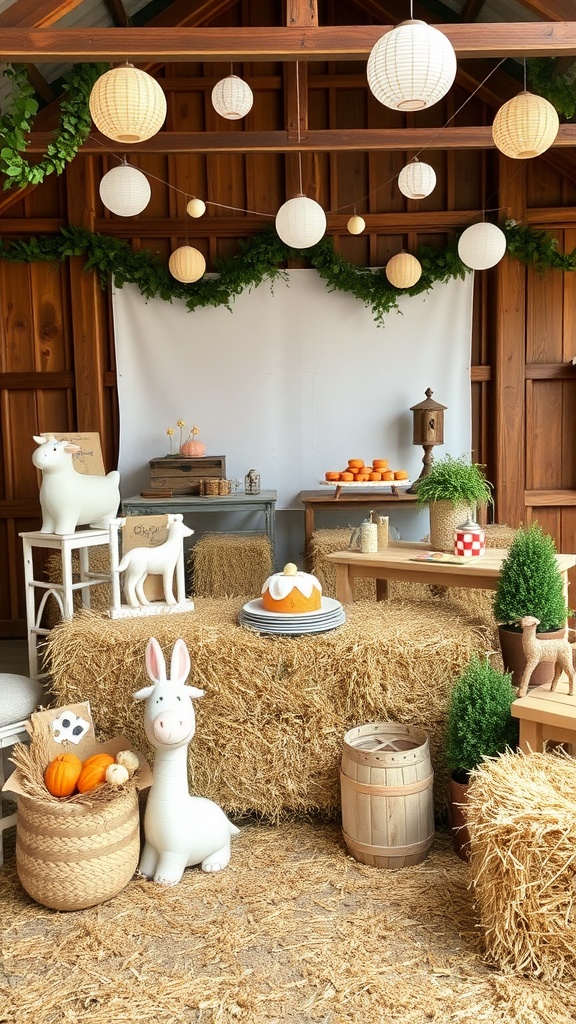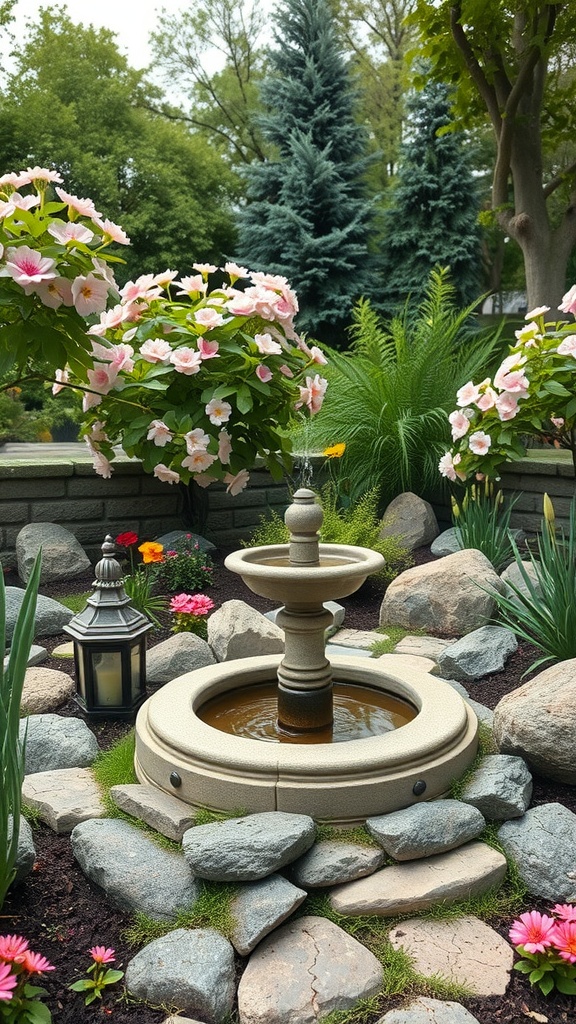19 Plants That Repel Mosquitos
Enjoying time on your back porch or relaxing in your garden should be peaceful—not a battle with buzzing mosquitos. Thankfully, nature offers some beautiful and fragrant solutions to keep those pesky insects away.
If you’re dreaming of modern back porch ideas that blend function and beauty, incorporating mosquito-repelling plants into your outdoor living space is a stylish and eco-friendly solution. These natural repellents pair wonderfully with modern patio furniture and back porch decor, creating a lush, inviting space that’s both comfortable and practical.
Here are 19 plants that not only enhance your outdoor vibe but also help protect your skin from unwanted mosquito bites.
1. Lavender
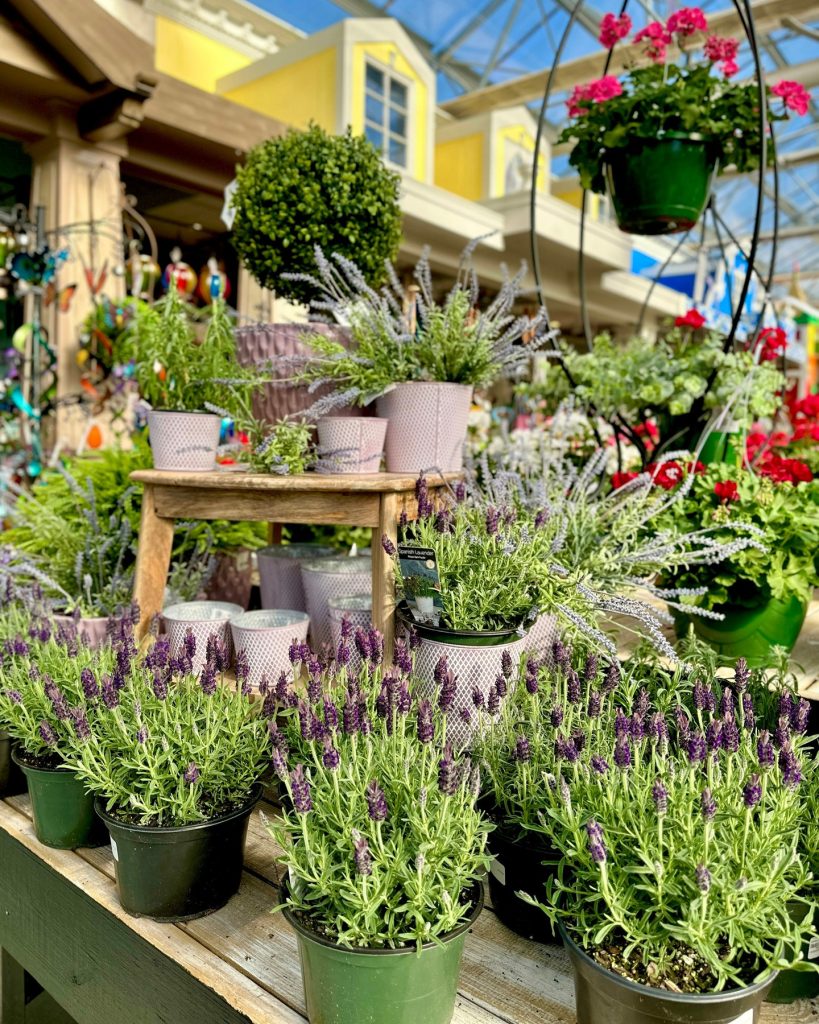
Lavender is not only known for its soothing scent and gorgeous purple blooms but also for its mosquito-repelling properties.
This Mediterranean herb contains linalool and camphor—two compounds that naturally repel mosquitos. They can’t stand the strong, floral aroma, which makes lavender a great choice for borders, planters, or even hanging baskets around your back porch.
Its drought tolerance makes it a low-maintenance plant that thrives in full sun. Add it to decorative pots near seating areas or line your walkways with it for a soft, aromatic touch to your back porch decor.
In addition to deterring mosquitos, lavender attracts pollinators like bees and butterflies, which helps your garden thrive. If you’re looking for plants that are beautiful, useful, and enhance your outdoor living experience, lavender is a must-have.
2. Citronella Grass
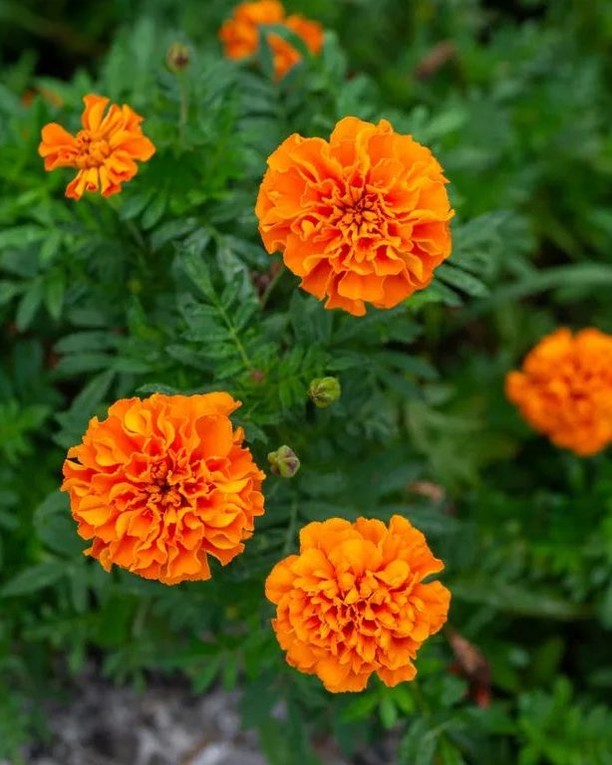
Citronella grass is one of the most popular and effective natural mosquito repellents.
Often found in candles and sprays, the citronella oil derived from this plant masks scents that attract mosquitos, such as carbon dioxide and body odor. It has a bold, lemony fragrance and grows in large, ornamental clumps—making it perfect for framing your patio or garden.
This tropical plant loves the sun and warmth, so it thrives in USDA zones 9-11. If you live in a cooler area, plant citronella grass in large pots you can move indoors during winter.
Adding citronella to your patio not only enhances your outdoor aesthetic but also supports your desire for a stylish, bug-free space. Combine it with sleek, modern patio furniture for a high-impact yet functional design.
3. Marigolds
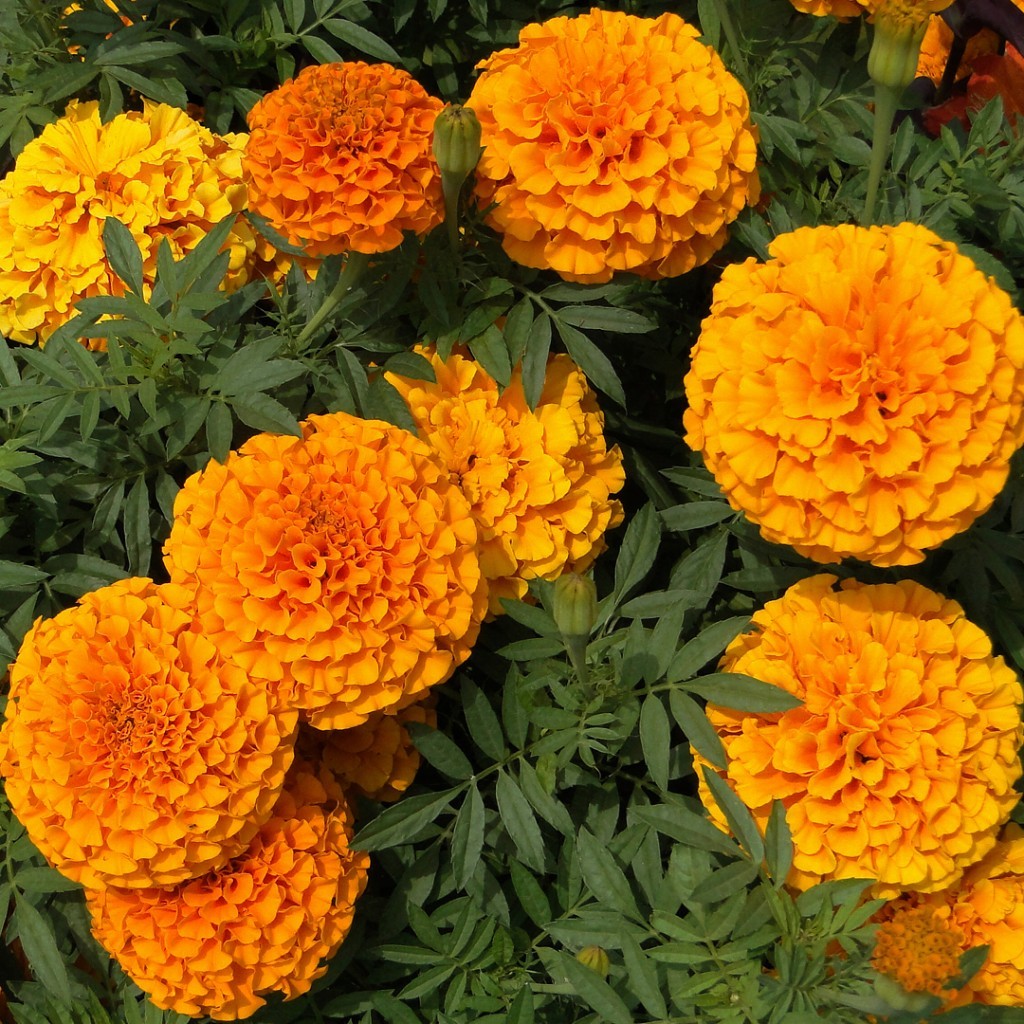
Marigolds are vibrant and hardworking annuals that do more than just look pretty.
These colorful flowers contain pyrethrum, a compound used in many commercial insect repellents. The scent of marigolds deters mosquitos, aphids, and even whiteflies—making them a multitasking addition to any outdoor living area.
Place marigolds in window boxes or containers around your deck or patio to create a cheerful and protective perimeter. Their rich gold, orange, and red hues also complement many back porch decor schemes, especially rustic or cottage-style designs.
Marigolds thrive in sunny spots and bloom consistently through the warmer months, providing long-lasting beauty and protection.
4. Basil
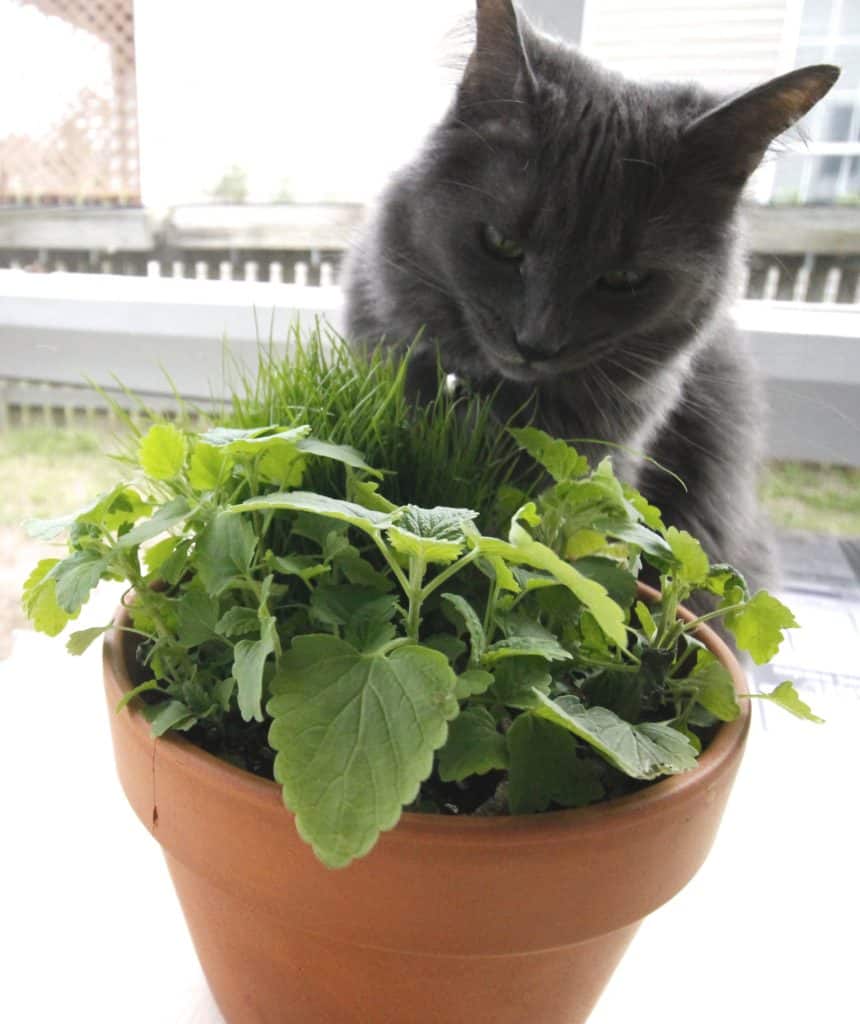
Basil isn’t just for pasta—it’s a powerful mosquito repellent and a fresh addition to your outdoor space.
This aromatic herb emits a strong scent that mosquitos find overpowering, especially varieties like lemon basil and cinnamon basil. Plant it in containers or raised beds near your sitting areas to keep bugs at bay and provide easy access for your kitchen needs.
Basil grows best in full sun and well-drained soil, making it perfect for sunny patios and modern back porch setups. You can even mix it into your flower beds for a splash of greenery that smells amazing.
Not only does basil enhance your cooking and repel mosquitos, but it also adds texture and charm to your garden.
5. Lemon Balm
Source
Lemon balm, a member of the mint family, boasts a lemony scent that mosquitos absolutely detest.
The plant contains citronellal, a compound similar to what’s found in citronella grass, making it an excellent natural repellent. It grows quickly and can even become invasive if not contained, so many homeowners prefer to keep it in pots or window boxes.
Lemon balm is a lovely addition to outdoor living spaces—especially when arranged around porch steps or seating areas. Its soft, green leaves and refreshing aroma also make it a relaxing herb to brush against as you walk by.
For back porch decor with a sensory boost, try mixing lemon balm with other herbs in a dedicated planter to form a practical, fragrant barrier against insects.
6. Rosemary
Source
Rosemary is a sun-loving herb that doubles as a mosquito repellent and a fragrant accent to your garden or patio.
It releases a woody scent that’s delightful to humans but unpleasant to mosquitos. Rosemary also contains camphor and eucalyptol—two compounds that naturally repel insects. Plant it in containers, raised beds, or even vertical planters to suit your modern back porch ideas.
The spiky, evergreen look of rosemary adds year-round visual interest, making it an ideal companion to streamlined, modern patio furniture. As a bonus, it’s a fantastic culinary herb and can be clipped for cooking anytime.
Toss a few sprigs on your grill or outdoor fire pit to release an even more potent aroma that deters mosquitos while adding flavor to your meals.
7. Peppermint
Source
Peppermint offers more than just a refreshing scent—it’s a potent mosquito deterrent.
The menthol in peppermint irritates mosquitos’ sensory receptors, making them steer clear of any areas where this herb grows. You can plant peppermint in small pots and tuck them around your patio, on tables, or along garden paths for maximum effect.
Like other mints, peppermint spreads quickly, so it’s best kept in containers unless you want it to take over your garden. Its bright green leaves and cooling scent make it a great addition to a sensory garden or a modern outdoor nook.
For an extra boost, you can crush the leaves and rub them on your skin as a temporary natural repellent.
8. Catnip
Source
Catnip may drive your feline friends wild, but it sends mosquitos packing.
This herb contains a compound called nepetalactone, which has been found to be even more effective at repelling mosquitos than DEET in some studies. It’s easy to grow, drought-tolerant, and perfect for those looking to keep their outdoor living area both fun and functional.
Catnip’s silvery-green foliage and delicate flowers pair beautifully with minimalist garden layouts and modern back porch decor. Plant it in beds or containers around your seating areas, especially if you enjoy evenings on the patio.
One note: if you have outdoor cats, be ready for them to come around more often—catnip is an irresistible treat!
9. Lemongrass
Source
Often confused with citronella grass, lemongrass is another citrus-scented plant that’s excellent at repelling mosquitos.
Its strong aroma confuses and repels insects, while its tall, arching blades create a tropical look that works wonderfully with contemporary patio designs. Lemongrass prefers warm, sunny environments and well-drained soil—making it ideal for container planting on back porches or patios.
This plant’s bold silhouette complements modern patio furniture, adding structure and greenery to your outdoor space. It’s also edible and can be used in teas, soups, or Asian cuisine.
For a space that looks good and smells even better, lemongrass is a solid choice.
10. Sage
Source
Sage isn’t just for stuffing—it’s also a fantastic mosquito repellent.
This herb has a robust scent that insects find unappealing. When burned, sage releases aromatic smoke that acts as a natural bug deterrent, perfect for backyard fire pits or grills. Keeping potted sage near seating areas can help protect your skin while adding greenery to your outdoor living space.
Sage’s fuzzy, gray-green leaves and compact growth habit make it a great addition to container arrangements or herb gardens. It thrives in sunny spots and well-draining soil, aligning beautifully with low-maintenance modern back porch ideas.
Toss a few dried leaves into the flames the next time you light up your fire pit—your nose and your skin will thank you.
11. Geraniums
Source
Geraniums, especially the citronella-scented varieties, are known for their ability to keep mosquitos away.
These lovely flowers contain citronellol and geraniol, two essential oils that naturally repel bugs. Geraniums grow well in pots, hanging baskets, or garden beds, and they bloom in an array of colors—making them a beautiful, practical choice for your patio or porch.
Citronella geraniums have a lemony aroma and soft, feathery foliage that adds texture and scent to your space. They thrive in sunny areas and require well-drained soil. Place them near entrances or dining areas to form a fragrant barrier.
When paired with stylish planters and modern patio furniture, geraniums bring a polished yet functional touch to your outdoor decor.
12. Eucalyptus
Source
Eucalyptus trees and shrubs are not only elegant additions to your landscape—they’re also powerful mosquito deterrents.
Their distinctive, menthol-like aroma comes from eucalyptol, a compound that disrupts the mosquito’s sense of smell. This makes eucalyptus a beautiful and functional plant for outdoor living spaces. The blue-green foliage pairs well with minimalist and modern back porch ideas, especially in pots or large planters for patio corners.
Smaller varieties like the “Silver Drop” eucalyptus can be grown in containers and shaped to suit your space. They love full sun and well-draining soil, and when placed near seating areas or walkways, they create a calming visual and aromatic effect.
You can even clip the branches and hang them indoors or use them in arrangements—making eucalyptus a stylish, multi-use addition to your mosquito-fighting lineup.
13. Bee Balm
Source
Bee balm, also known as Monarda, brings color, fragrance, and mosquito-repelling power to your garden.
This vibrant plant produces beautiful blooms in shades of red, pink, and purple, attracting butterflies and hummingbirds—but not mosquitos. The strong scent of bee balm masks the carbon dioxide we emit, confusing and repelling mosquitoes in the process.
Bee balm grows well in flower beds or larger planters and pairs wonderfully with lush outdoor living aesthetics. Its frilly, spiky blooms bring texture and movement to your space, making it ideal for borders or feature containers on your back porch.
It’s also part of the mint family, so it shares some of the same easy-growing and aromatic qualities. Combine it with other herbs like basil and sage for a layered, practical garden that supports both style and comfort.
14. Allium
Source
Allium, the ornamental cousin of onions and garlic, offers show-stopping globe-shaped blooms—and a natural mosquito deterrent.
Allium plants contain sulfur compounds that ward off mosquitos and other pests. Their striking purple or white flowers bloom in late spring or early summer and stand tall on slim stems, making them a dramatic addition to garden beds or planter arrangements.
The scent is more subtle than garlic, but strong enough to keep bugs away. These bulbs prefer full sun and thrive in well-drained soil, blending well with both traditional garden styles and modern back porch decor.
Use them to create visual contrast with low-growing herbs or flowers, or plant them in rows for a unique border that’s as functional as it is beautiful.
15. Garlic
Source
Garlic may not be the first plant you think of when designing your patio space—but it’s a powerful ally in the fight against mosquitos.
The pungent aroma of garlic is unappealing to mosquitos, and its natural sulfur compounds act as a barrier. You can grow garlic in containers or garden beds, harvesting the bulbs while also enjoying their insect-repelling benefits.
Garlic grows best in sunny locations and well-drained soil. For a decorative touch, interplant garlic with flowering herbs like thyme or oregano to add texture and diversity to your patio layout.
Some gardeners even use garlic-based sprays made from the crushed bulbs to treat surrounding plants and repel pests. If you’re into modern back porch ideas with a purpose, garlic is an unexpected yet effective plant to include.
16. Pennyroyal
Source
Pennyroyal, a lesser-known member of the mint family, is a potent mosquito repellent—though it should be handled with care.
This low-growing plant has small lavender flowers and a strong minty scent that deters mosquitos naturally. It’s best suited for container planting, as it can become invasive and is toxic to pets and humans if ingested in large quantities.
Despite its cautionary requirements, pennyroyal is highly effective when used as a border plant around patios or placed in planters around seating areas. Its trailing habit makes it a lovely choice for hanging baskets or the edges of raised beds.
For stylish back porch decor that leans into both beauty and function, pennyroyal brings something a little different to the mix—just be mindful if you have pets or children nearby.
17. Bay Laurel
Source
Bay laurel is a beautiful evergreen shrub that offers fragrant leaves and natural mosquito protection.
The essential oils found in bay leaves contain compounds like eugenol and myrcene, which repel mosquitos and other bugs. Bay laurel thrives in full sun and grows well in large containers, making it perfect for porches or patio corners.
Its upright growth and glossy green leaves make it a stylish choice for modern outdoor living designs. You can clip the leaves for cooking, too—another reason to love this multitasking shrub.
Keep bay laurel trimmed to maintain its shape, and pair it with decorative planters that match your patio furniture for a cohesive and elegant look.
18. Wormwood (Artemisia)
Source
Wormwood, also known as Artemisia, is a silvery-leaved plant that mosquitos avoid like the plague.
Its foliage gives off a strong aroma thanks to thujone, a compound that’s toxic to mosquitos. Wormwood’s lacy, gray-green leaves add visual texture and contrast to your garden, making it an excellent addition to minimalist or Mediterranean-style patio decor.
It prefers sunny conditions and dry soil, and once established, is incredibly drought-tolerant. You can use wormwood as a border or plant it in containers for flexible design options.
Note: While wormwood is excellent for repelling pests, it should not be consumed, especially by pets or children. For outdoor living that feels more sophisticated and less bug-ridden, wormwood is a smart choice.
19. Tansy
Source
Tansy is a bold and beautiful plant with bright yellow button-like flowers and a strong herbal scent that drives away mosquitos.
Its natural oils contain thujone and camphor—both known for their insect-repelling properties. Tansy thrives in sunny conditions and adds a splash of color to garden beds, especially when paired with muted-toned modern patio furniture or natural wood elements.
Because it can become invasive, tansy is best grown in containers or controlled garden areas. The plant is also toxic if ingested in large quantities, so keep it out of reach of pets and children.
That said, its feathery foliage and long-lasting blooms make it an eye-catching and practical addition to any outdoor setting. Tuck it behind seating areas or along the edges of a fence line for the best mosquito-repelling results.
Conclusion
When it comes to outdoor living, comfort and style should go hand-in-hand. Incorporating these 19 mosquito-repelling plants into your garden, patio, or back porch decor is a smart, sustainable way to elevate your space.
From fragrant herbs like basil and lavender to ornamental showstoppers like allium and geraniums, these plants offer more than just good looks—they actively protect your skin from mosquitos and let you enjoy your modern outdoor spaces all season long.
Whether you’re designing a chic retreat with modern patio furniture or dreaming up new back porch ideas, these natural repellents help you reclaim your space without relying on harsh chemicals.
So go ahead—plant a little beauty, breathe in the aroma, and bask in the bug-free bliss of your thoughtfully designed outdoor haven.

